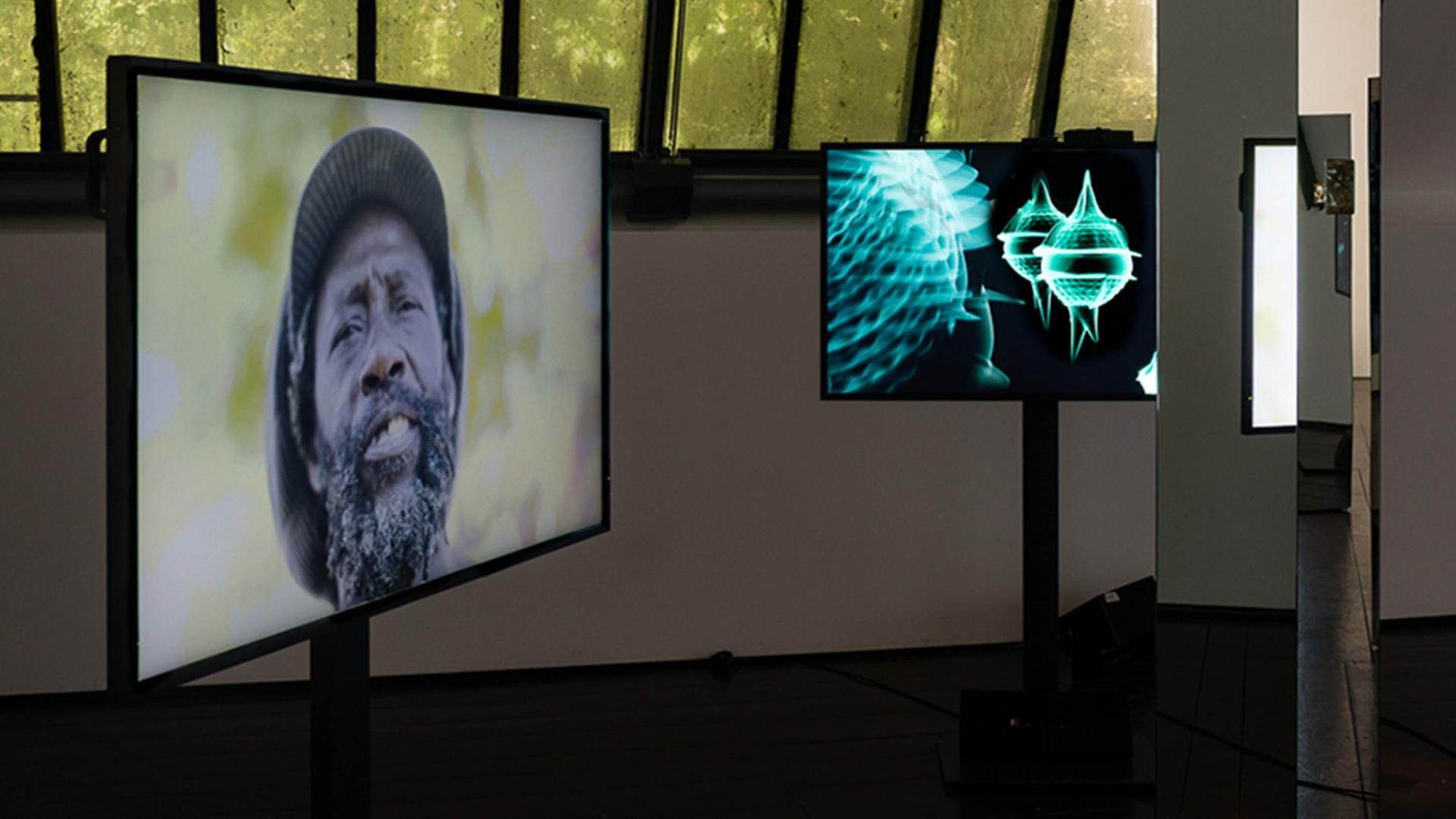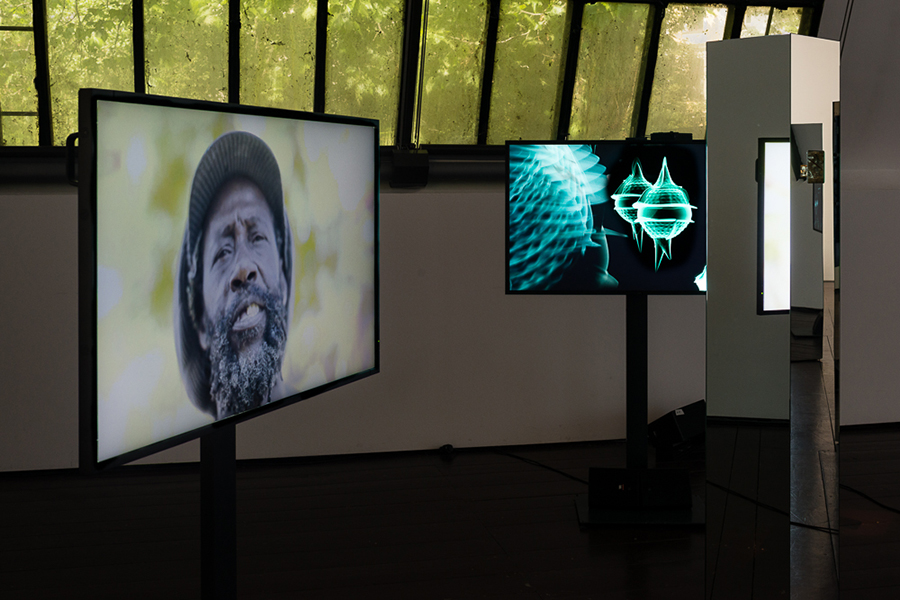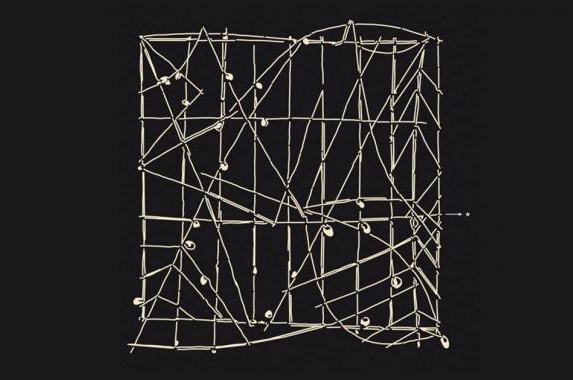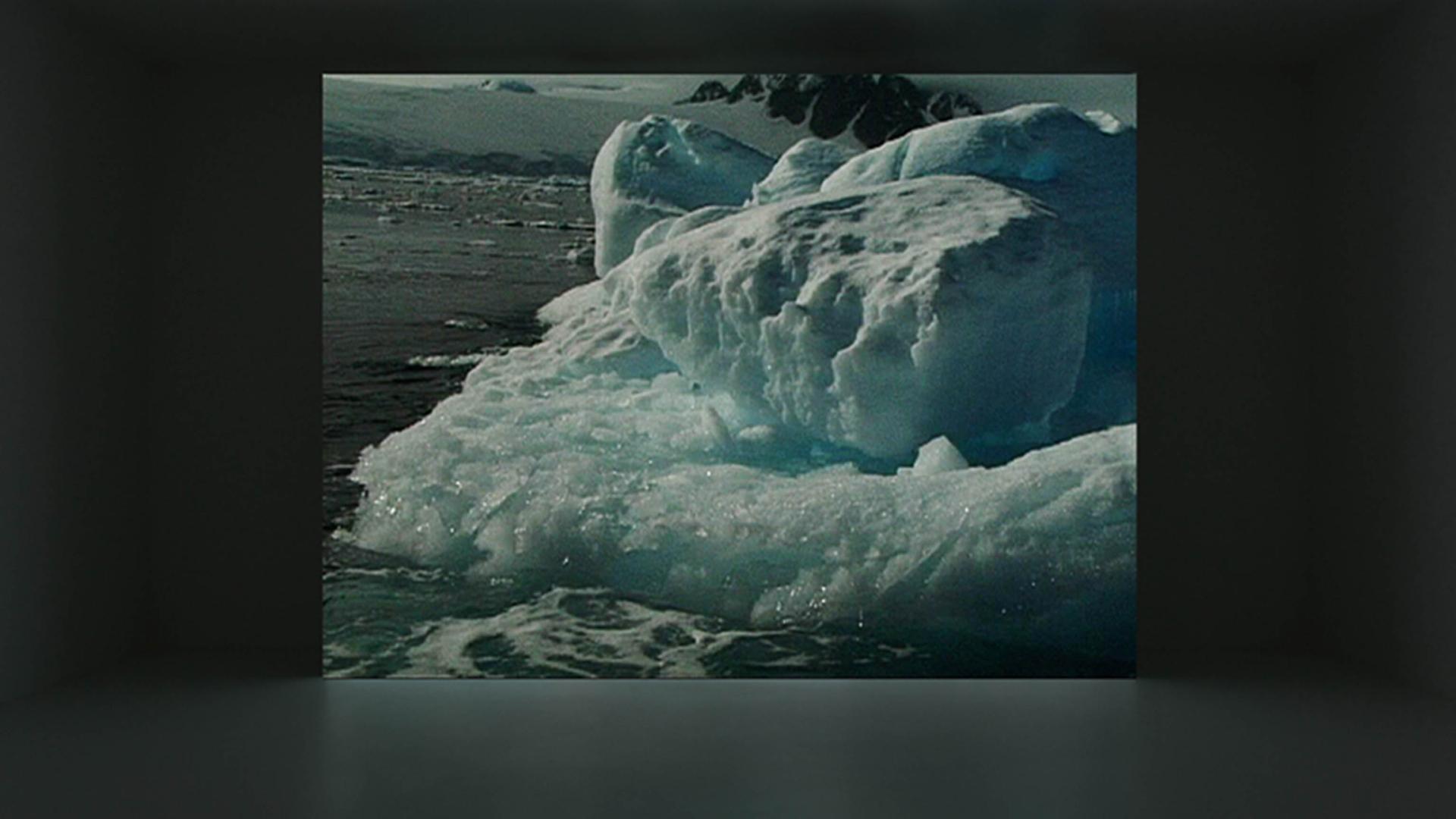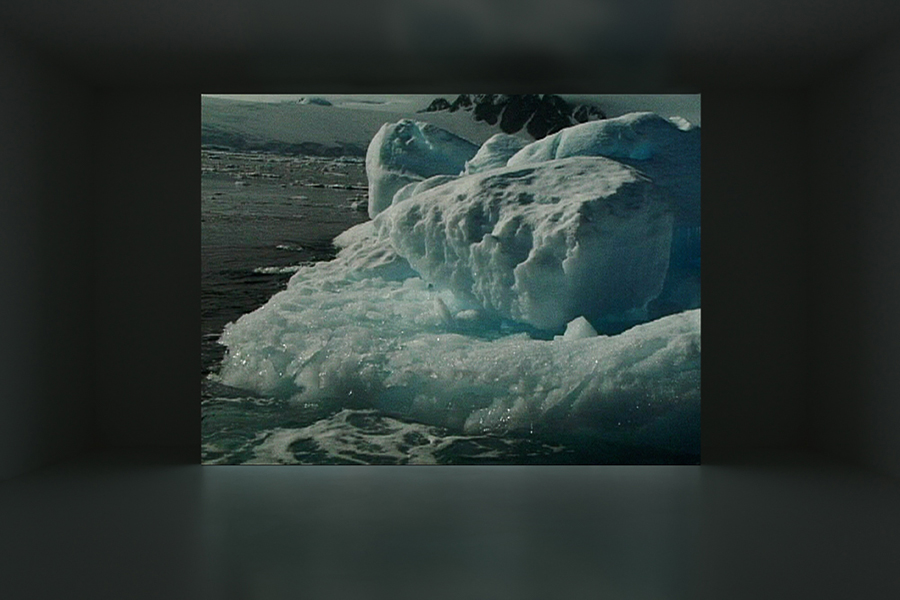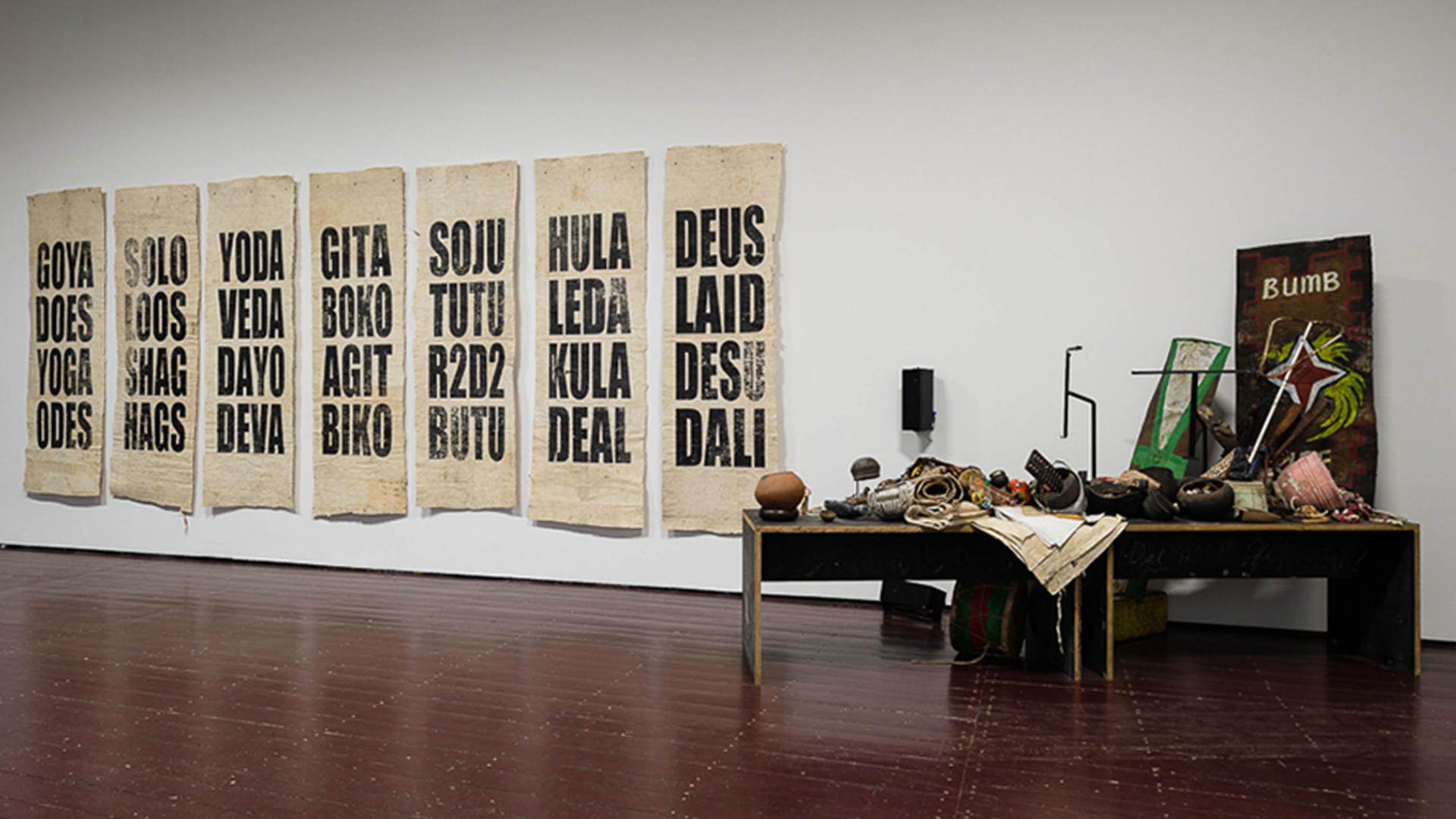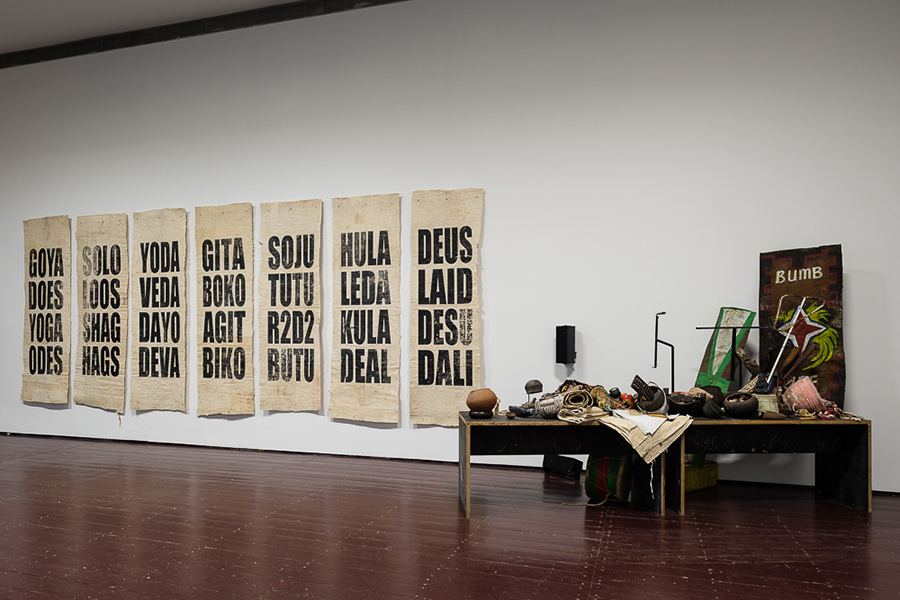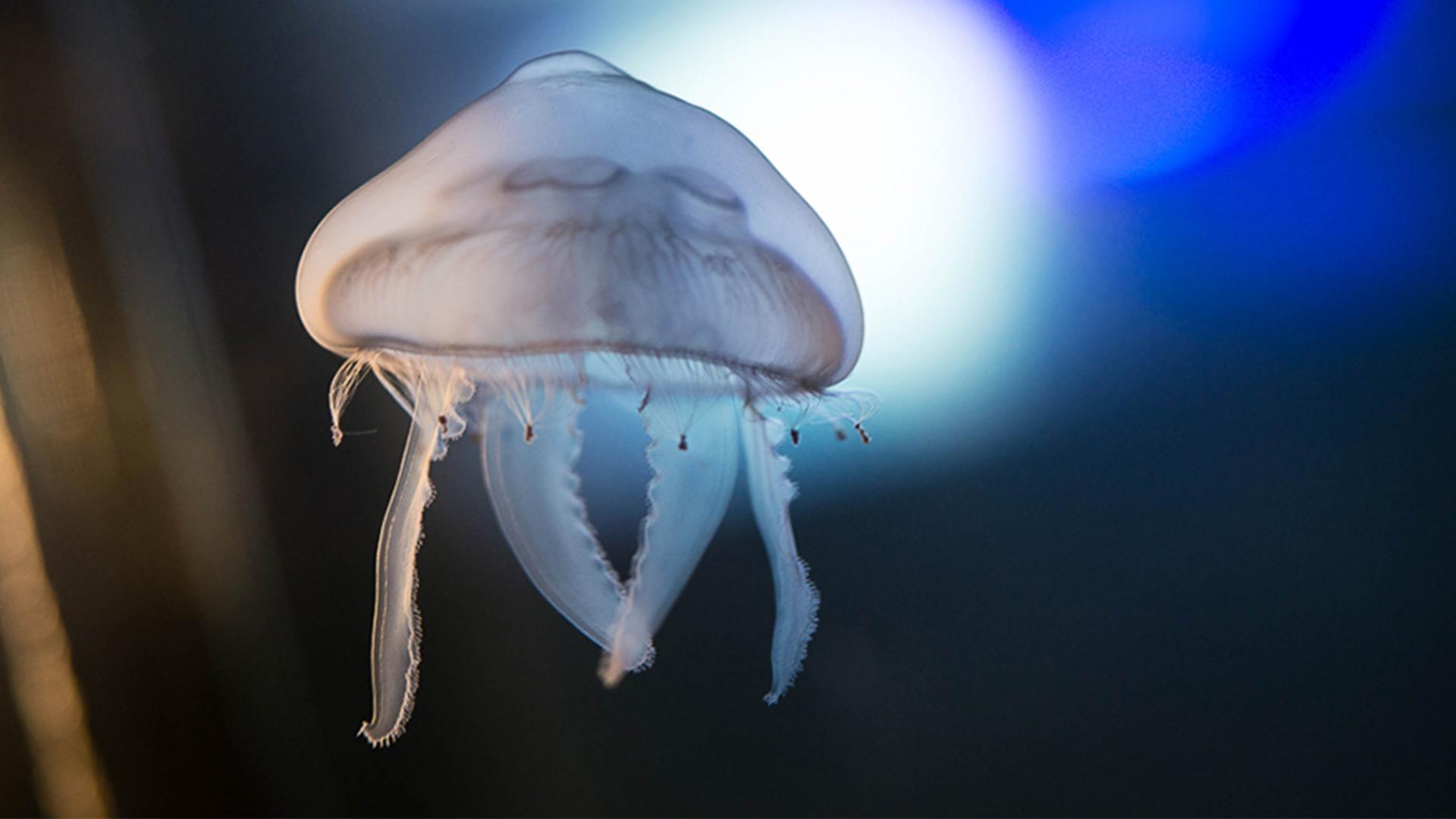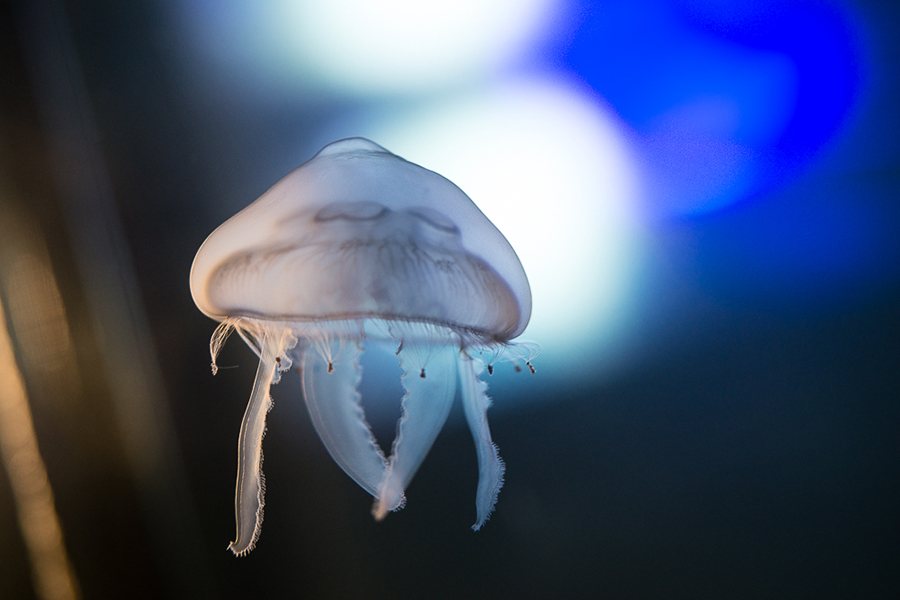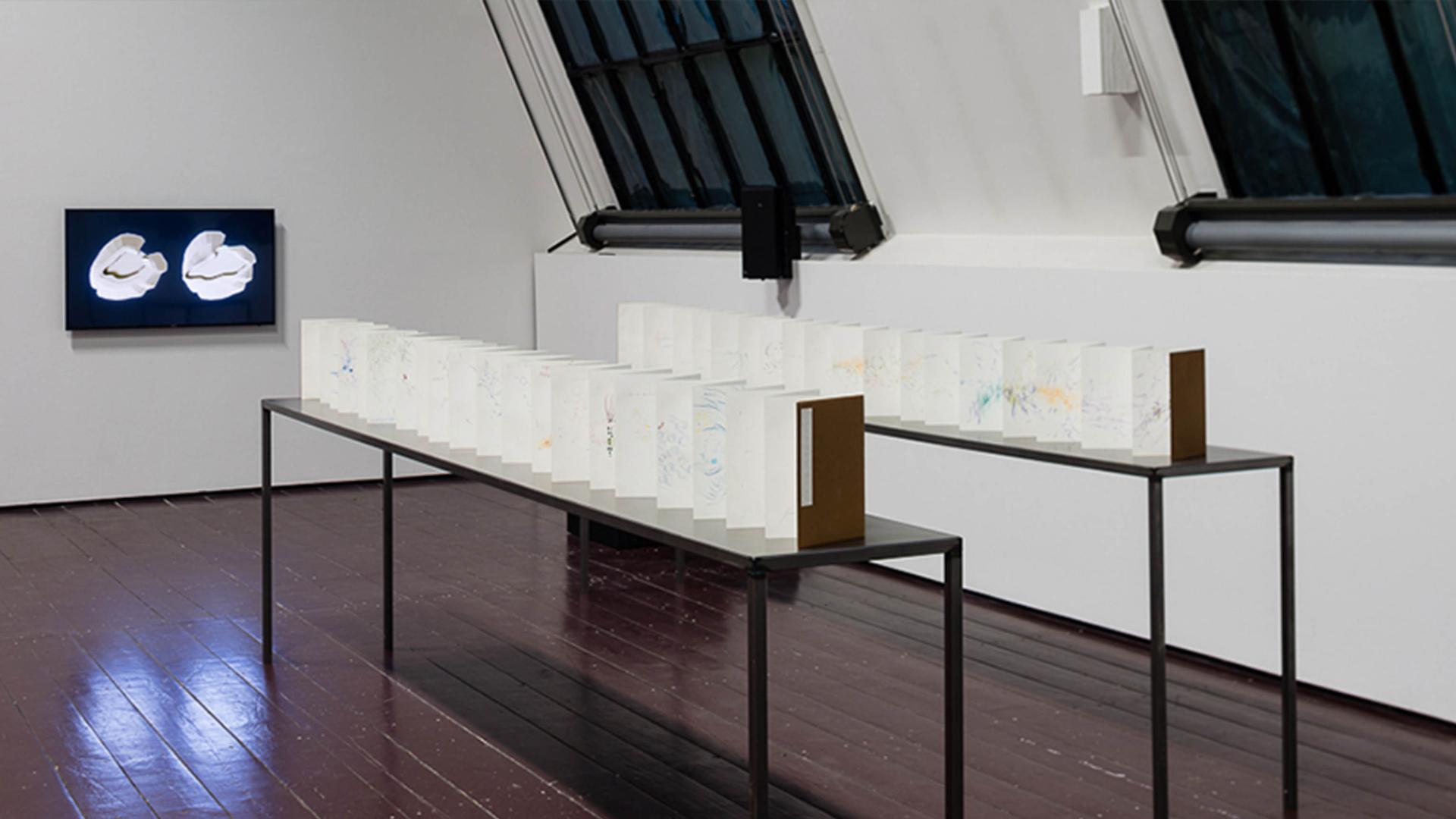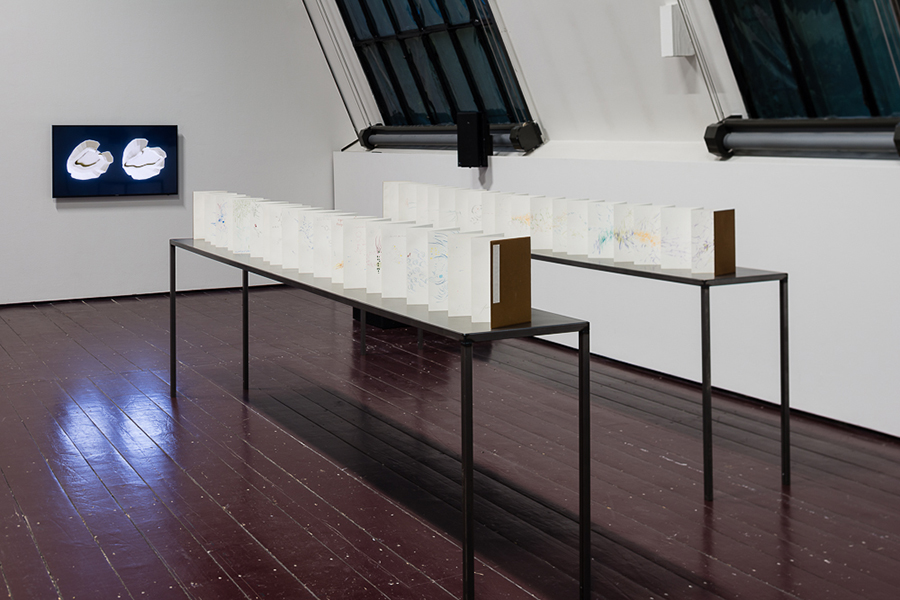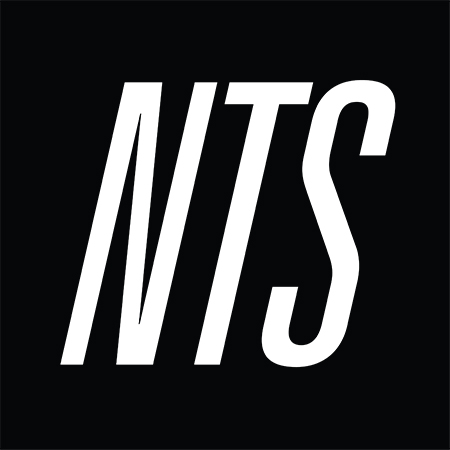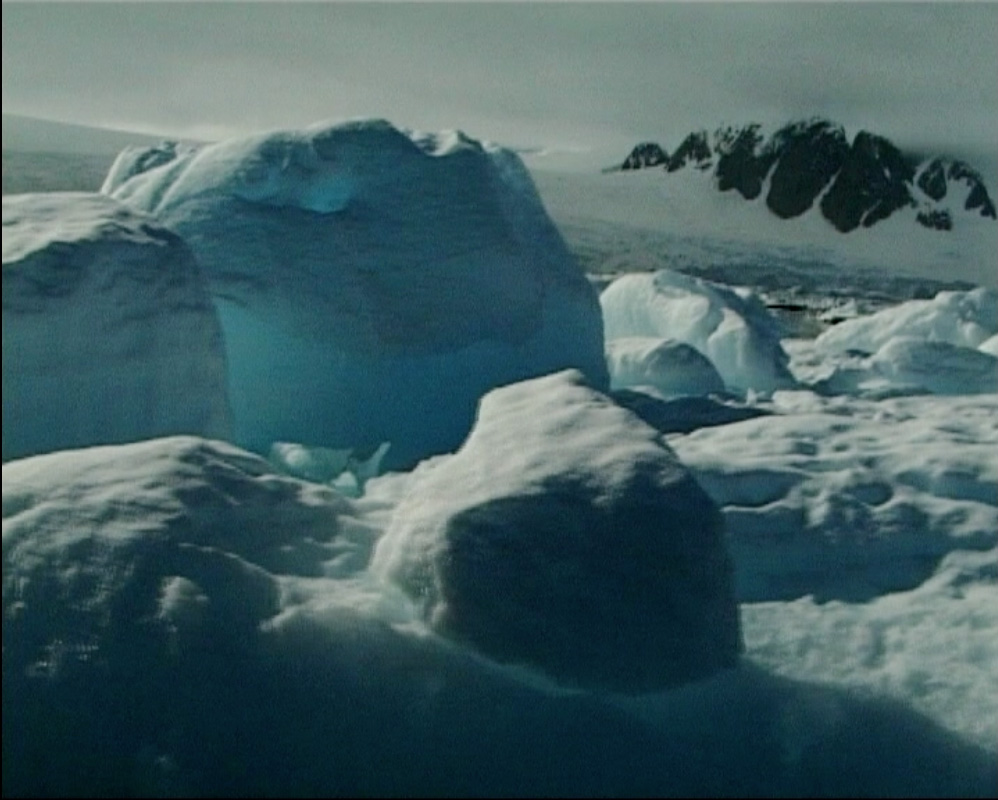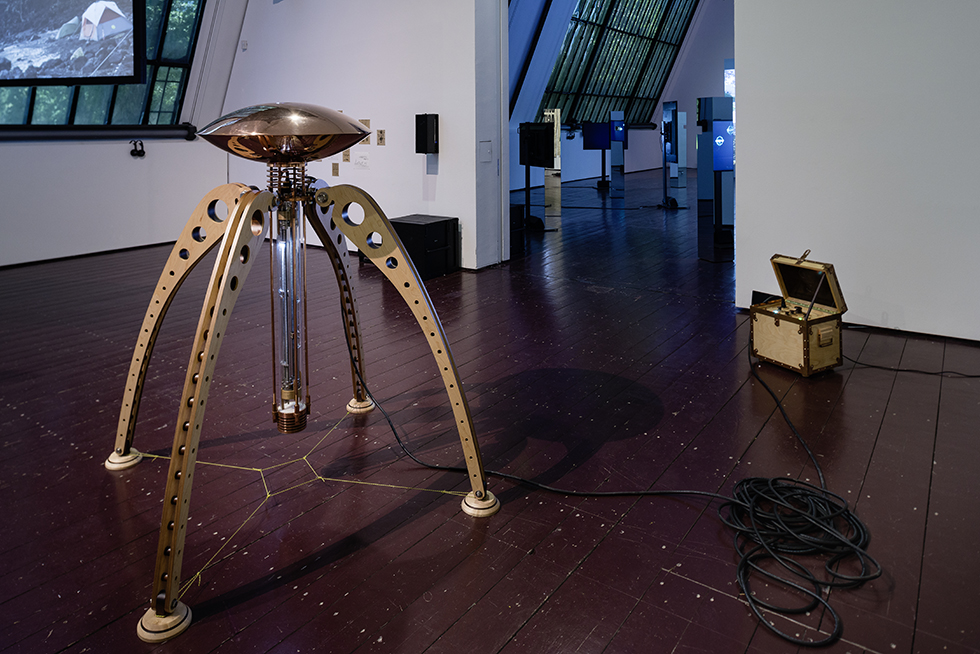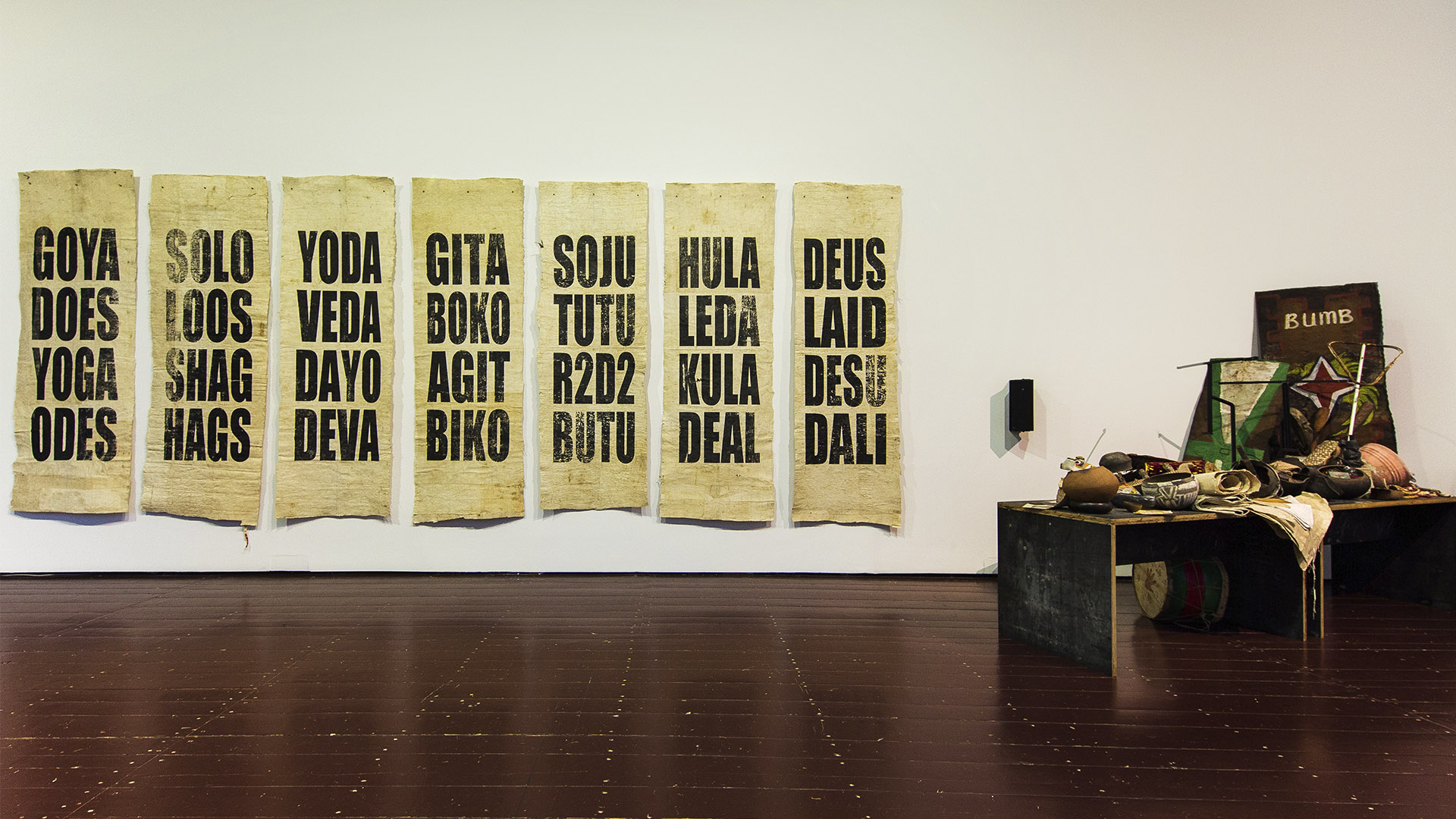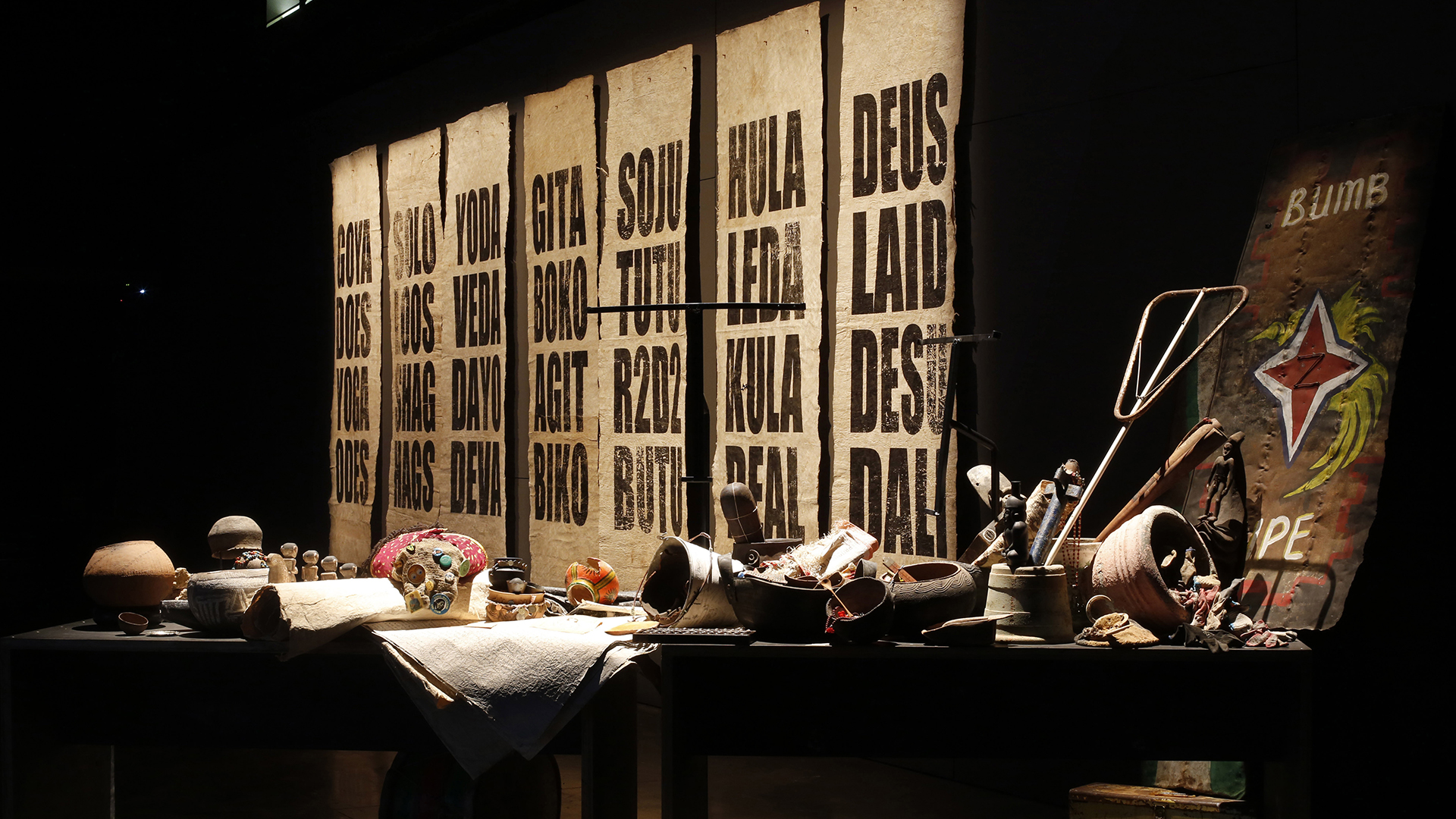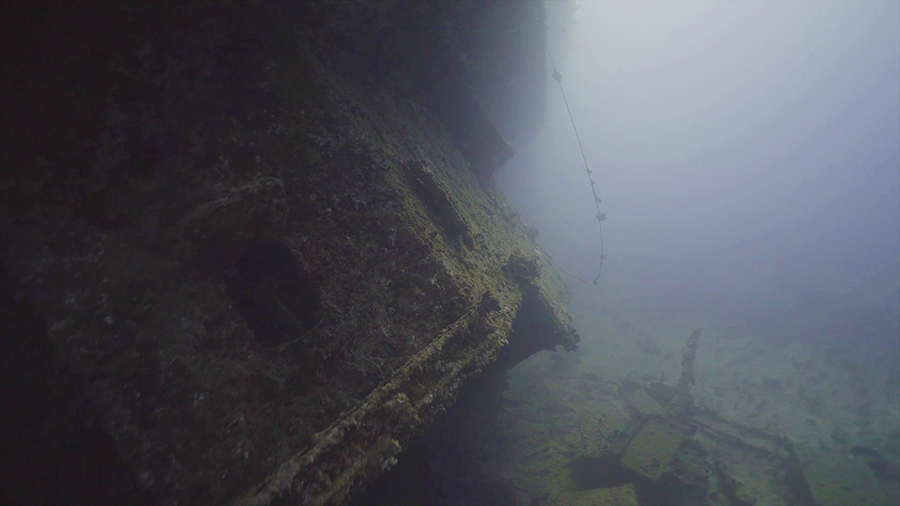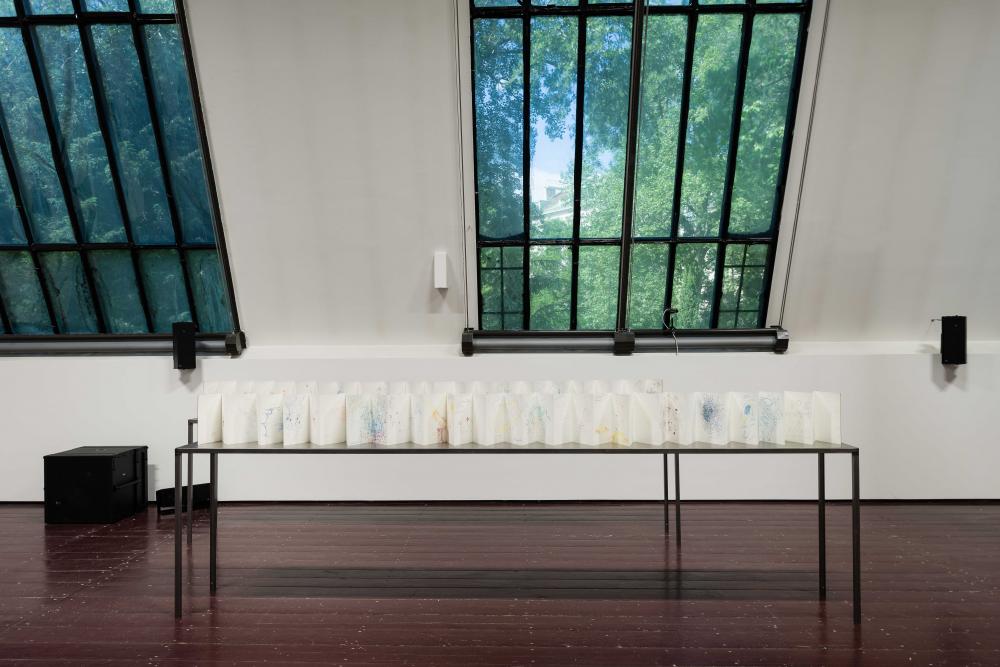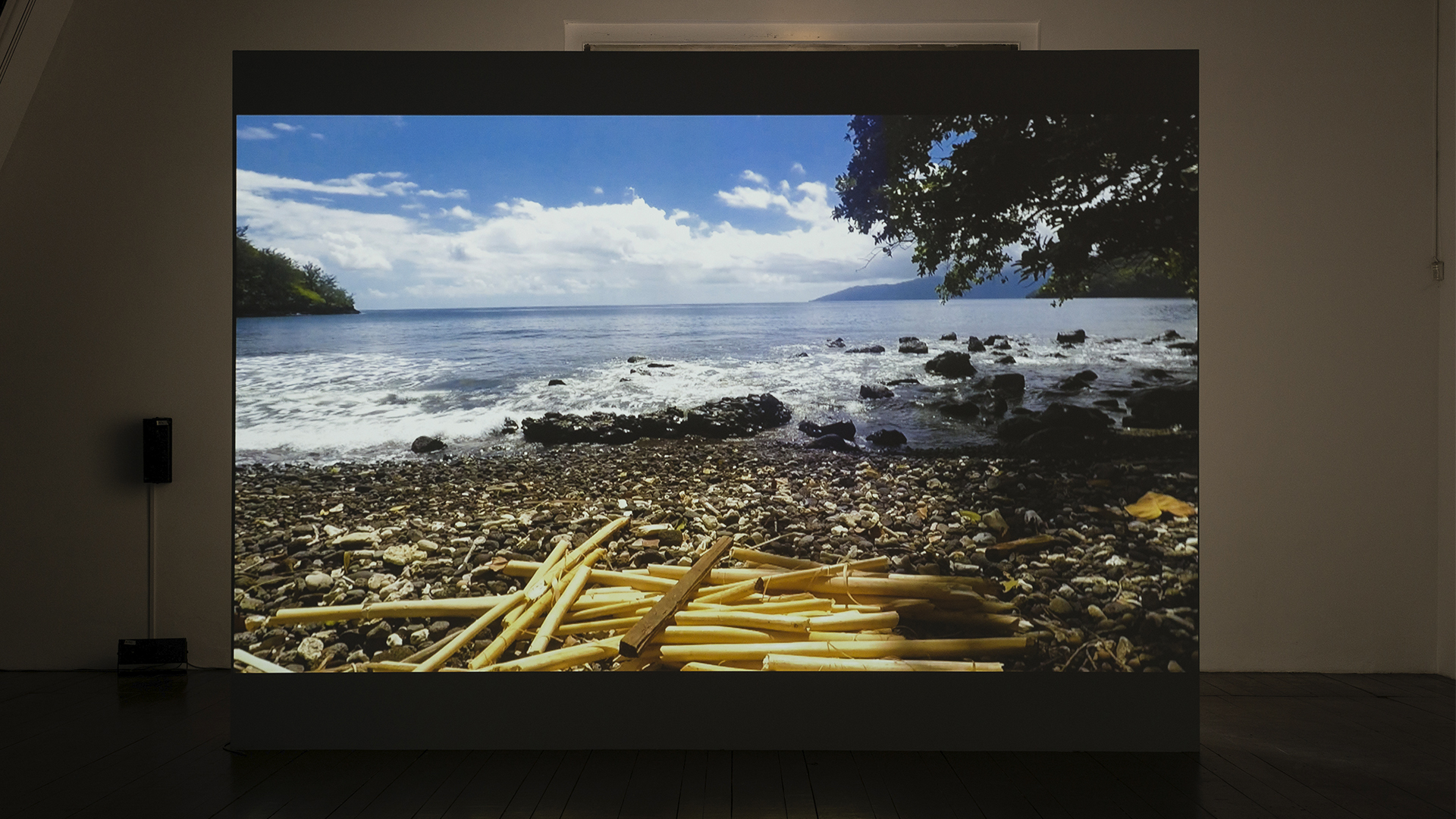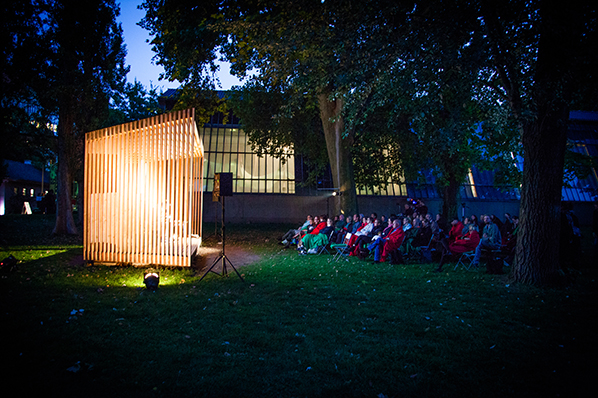...like the movement of the ocean she’s walking on, coming from one continent/continuum, touching another, and then receding ('reading') from the island(s) into the perhaps creative chaos of the(ir) future... – Kamau Brathwaite
Tidalectics is an oceanic worldview, a different way of engaging with the oceans and the world we inhabit. Unbound by land-based modes of thinking and living, the exhibition is reflective of the rhythmic fluidity of water and the incessant swelling and receding of the tides.
TBA21–Academy’s first exhibition,
Tidalectics, presents thirteen standout artists whose distinctive works cast oceanic perspectives on the cultural, political, and biological dimensions of the oceans, some examining the effects of human-made issues such as climate change and sea-level rise, and others reimagining human and “more-than-human” relationships. Tidalectics will comprise nine newly commissioned works, many flowing from the Academy’s expeditions in the Pacific Ocean, alongside exceptional pieces from the Thyssen-Bornemisza Art Contemporary (TBA21) collection.
Taking its title from a play on words by the celebrated Barbadian poet-historian Kamau Braithwaite,
Tidalectics seeks to comprehend our histories as trajectories tossed by waves, from ocean crossings to systems of exchange, myths, and microbial origins. The exhibition will highlight processes of cultural adaptation and material change, presenting a rich framework for understanding the coalescing polarities of contemporaneity and history, science and poetics, routes and roots, and ourselves—mostly land-dwelling humans—with the oceans and their many and diverse inhabitants.
TBA21–Academy is a site of cultural production and transdisciplinary research, focused on enabling a deeper understanding of our oceans. Founded by Thyssen-Bornemisza Art Contemporary in 2011, it is conceived as a moving platform on the oceans, bringing together artists, scientists, and other thinkers from across numerous fields to investigate the most pressing environmental issues of our time.
Participating artists and worksSearching for a logic coming from the oceans themselves,
Eduardo Navarro’s newly commissioned drawings, video, and sculptural work
Hydrohexagrams (For Tahuata) (2017) flows from a series of serendipitous constellations during the TBA21–Academy expedition to the Marquesas Islands, in the South Pacific. After the voyage, Navarro produced a magnified set of bronze coins like those used in the I Ching – a traditional Chinese divination method – and took them back to the island of Tahuata. Here, where the idea for the work originated, the artist proposed to the local community to use the coins and I Ching book to pose a question to the ocean. The three coins were thrown into waves six times successively, leaving the resulting divination hexagram to be defined by the force of the waves. The three coins that were cast into the ocean were brought to Vienna, while the other I Ching set stayed behind in Tahuata, as a public artwork that will be displayed in the Artisan Museum and could be used by the different villages of the island.
Alexander Lee, a participant in the same expedition in his native French Polynesia, carefully reconsiders the imaginary of the desert island. The video
Me-ti'a – An Island Standing (2017) merges documentary images from a boat expedition by Lee and his collaborators to Mehetia – the volcanic hotspot east of Tahiti from which all of the Society Islands have emerged – with the legend of Vaita. In 1760, seven years before the arrival of the British naval officer Samuel Wallis in Tahiti, the Raiatean priest Vaita saw in a premonition that a canoe without an outrigger would arrive on the islands. Wallis’s arrival on the HMS Dolphin and his “discovery” of Tahiti vindicated the prediction and changed the fate of the region forever.
Newell Harry charts creole and pidgin languages, alternative modes of exchange, and notions of value and currency in the Pacific. The exhibition features two works from the TBA21 collection:
Untitled (Objects and Anagrams for R.U. & R.U. (Part II), which employ the Kula Ring, a traditional system of ceremonial gift exchange; and anagrams printed on hereditary Tongan ngatu cloths, titled
Untitled (Anagrams and Objects for R.U. & R.U. (Part I) (both 2015). The cloths are passed down from one generation to the next and, similar to the Kula objects, acquire value and meaning due to provenance. Harry, who has travelled extensively in the South Pacific, prints four-lettered terms on these organic banners, juxtaposing words like “KULA” with “R2D2” and “GOYA” with its anagram “YOGA,” resulting in a potpourri of references from diverse contexts that span Pacific geographies, art history, and popular culture.
Ocean voyages and narrations of migration are the pivot of
Em’kal Eyongakpa’s work in the exhibition. Reminiscent of a boat, his newly commissioned installation,
Gaia beats/bits III-i/doves and an aged hammock (2017), destabilizes the ground under visitors’ feet. The moving floor is accompanied by a fishing net swinging back and forth suspended from the ceiling, filled with debris found by beachcombers and personal objects of oceanic travelers, from voluntary voyages to forced migration. The installation is accompanied by an audio track of poetic tales and rhythmic sounds.
Darren Almond’s video
A (2002) from the TBA21 collection presents an Antarctic world of infinite whites devoid of human presence, accompanied by a soundtrack that alternates between dreamy serenity and blood-thumping menace. The work stands in contrast to some of the other pieces in the exhibition, yet as temperatures increase and the ice at the poles melts faster and streams into the oceans, sea levels will continue to rise all around the world, affecting land across latitudes and spanning apparently disconnected geographies.
The video
Iroojrilik (2016) by
Julian Charrière charts meetings of the “natural” and the human-made during nuclear tests on the Bikini Atoll in an atemporal loop of life, death, and rebirth. Accompanied by a soundtrack by Edward Davenport evoking successive moments of suspense, the film suggests continual transitions between beginnings and endings – the first light of day in a new era in the Pacific and the beginning of nightfall for pre-anthropocenic spatiotemporal constellations.
In his publication and animation project
Tepoto Sud morph Moruroa (2017), emerging from a TBA21–Academy expedition led by Ute Meta Bauer to the Tuamotus in French Polynesia,
Atif Akin reflects on the creation of new mythologies analogical to radioactive deformations of code and matter resulting from the 193 nuclear tests that took place in this island archipelago. Using an equation developed by mathematician Felix Klein in the late 19th century to model ocean swells and waves, Akin transforms the animation in a way analogous to how radiation mutates matter. By placing the digitized geological structures in constant correlational transposition between creation and degeneration, the project confounds science and fiction and participates in the creation of new myths in the face of changing ecological conditions.
Musician, researcher, artist, iridologist, herbalist, and inventor
Ariel Guzik’s
The Nereida Capsule (2015) from the TBA21 collection is an instrument designed to search for communication with cetaceans. It materializes an intention of encounter with inhabitants of the sea, devoid of utilitarian or scientific research interests. For thirty years, Guzik has explored physics, mechanics, electricity, and magnetism with his Nature Expression and Resonance Research Laboratory, leading to the invention of mechanisms that give nature a voice through music.
Susanne M. Winterling’s installation
Glistening Troubles (2016) results from the artist’s residency at the TBA21 Alligator Head Foundation in Jamaica. The work investigates the bioluminescence of dinoflagellate algae as indicators for the health of coastal waters with toxic potential. For several years, Winterling’s research has homed in on these organic bodies that light up when touched or moved, reminiscent of the touchscreens that surround us these days. A video interview with a Rock-based fisherman, which Winterling shot during her residency, grants insight into the medicinal properties of algae for treating skin infections, known to locals for centuries. The work places the skin – our outer boundaries, with which we touch our surroundings – and luminescent screen technologies – our interfaces to digital realities – in metaphorical proximity. Winterling’s research delves into the overlapping information in analog and virtual worlds as well as into interspecies solidarity and points to our vibrant entanglement with other bodies.
For his new work
Tamoya Ohboya (2017),
Tue Greenfort presents an aquarium with living jellyfish, with a projection showing videos the artist filmed during expeditions with TBA21–Academy to Papua New Guinea and the Marquesas. With the installation, Greenfort explores complex ecosystems and the consciousness of these aquatic organisms that have roamed the seas for at least 500 million years. With warming ocean temperatures, jellyfish spread into regions where they were not found previously. As gender and environmental researcher Eva Hayward has shown, jellyfish are beings with ways of knowing and sensing that challenge anthropocentric logics and epistemological taming. Their life cycles and modes of reproduction differ from human and many land- and sea-based organisms; they lack bones, a centralized heart, or brain; and their nerves are distributed in a net spread over their bodies. Their alterity challenges our ideas of consciousness, ethics, and relationships to more-than-human entities, urging for a shift in planetary awareness.
Janaina Tschäpe’s leporellos are filled with fantastical drawings that oscillate between fact and fiction, springing from marine biologist
David Gruber’s accounts of deep sea creatures and extremophiles. The process is reminiscent of artists joining exploratory voyages or creating drawings based on specimen brought back by expeditions during the 19th and 20th centuries by travelers like Alexander von Humboldt or Charles Darwin. In Tidalectics, two leporellos filled with drawings by Tschäpe and scientific annotations by Gruber are shown. Titles like
Blood, Sea (inspired by Italo Calvino’s short story) and
Fictionary of Corals and Jellies (both 2017) point to the merging of an inventory and dictionary of underwater life with fictional elements.
For her project
Ocean SmellScapes (2017), smell researcher and artist
Sissel Tolaas collected and synthesized smells of Costa Rican oceanscapes currently undergoing ecological change. Olfaction is the most primary sense and it informs us of our surrounding reality, evoking specific emotions and causing substantial reactions in the perceiver. Tolaas has assembled smell data with the aim of preserving olfactory information about the different invisible levels of the oceans – cultural, historical, geographical, social, and linguistic – in light of their imminent disappearance from their site of origin.
Jana Winderen’s sound installation
bára (2017) is composed from hydrophone recordings the artist collected during various expeditions with the TBA21–Academy among other journeys, from the North Pole to the Caribbean and Pacific Oceans. The composition comprises diverse sounds, from waves to the distinctive clicking noises of crustaceans, from smaller fish species grunting to larger mammals like cetaceans. The oceans’ ecosystems are extremely sensitive to sound pollution and the sonic level of the underwater environment can be indicative of the health of marine habitats. The piece plays at different times each day, which shift according to the lowest and highest water level in the tidal calendar of Trieste, the geographically closest coast near Vienna.
See bára Tidal Timings here.





































